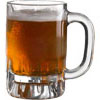- Introduction
- Alcohol and STIs
- What is safe alcohol consumption?
- What is safe sex?
- Tips for staying safe at the work Christmas party
- Be prepared for safe sex
- If all else fails, see your doctor
Introduction
The festive season is, for many, a time to let their hair down and have a few drinks after a hard year’s work. The work Christmas party can be a highlight of the festive social calendar, not only because the boss picks up the bill, but also because it’s a rare chance to socialise and get to know colleagues in a more relaxed and personal environment. With all that mistletoe floating around it can sometimes get a lot more personal than planned.
Relaxing and getting to know work colleagues is a well-deserved reward for a year of hard work. But bear in mind that the combination of booze, festive enthusiasm and the boss (or work mates) is a potentially dangerous combination. Australians consume more alcohol in the festive season and work Christmas parties are notorious for excessive alcohol consumption (and experimentation with other drugs).
Alcohol consumption causes the release of endorphins which promote relaxation and feelings of well-being. But alcohol also inhibits cognitive processes and reduces an individual’s inhibitions. The inhibition-lowering effect of alcohol is relatively short-lived, but the consequences of decisions made whilst intoxicated can have long term consequences. The prospect of surviving the next year at work with constant reminders about a drunken amateur office-party strip tease or a bout of drunken vomiting on the bosses party shoes, while embarrassing, is fairly minor in comparison to the potentially devastating consequences of risky post-Christmas party sex.
Alcohol and STIs
The associations between alcohol intoxication and risky sexual behaviour are well-documented. People who have sex when they’re drunk are more likely to take risks than those who have sex when sober. For example, they are less likely to use a condom to protect against sexually transmitted infections (STIs) and are subsequently more likely to contract a STI. Women who consume alcohol are more likely to become pregnant. Drunken sex is also associated with more aggressive behaviour from the male partner and a greater risk of sexual assault for the female partner. To avoid these risks, consume alcohol safely and to be prepared to make sex healthy if it happens.
What is safe alcohol consumption?
In the context of the office Christmas party, consuming alcohol safely means avoiding alcohol intoxication. To do this the National Health and Medical Research Council (NHMRC) recommend consuming no more than four standard alcoholic drinks per night. It is important to be aware that a standard drink is not always equivalent to a serving of alcohol. In Australia, the definition of a standard drink is one containing the equivalent of 10 g of ethanol. However, in many cases a single serving of alcohol (e.g. a glass of wine, a bottle of beer) contains more than 10 g of ethanol. For example, a standard drink may be the equivalent of:
- 100 mL of wine (9.5–13% alcohol);
- 250 mL of full strength beer (4.9% alcohol);
- 375 mL of mid-strength beer (3.5% alcohol);
- 470 mL of light beer (2.7% alcohol);
- 30 mL of spirits (37–40%).
Standard serving sizes often contain more than one standard drink. For example:
- In restaurants, wine is often served in 150 mL glasses (1.4–1.6 standard drinks);
- Standard cans and bottles of beer contain 375 mL of alcohol (approximately 1.4 standard drinks);
- Cans of pre-mixed spirits may contain up to 2.1 standard drinks.
What is safe sex?
Healthy sex is sex which has no detrimental effects on either partner’s health. People who avoid alcohol intoxication have a better chance of making their sexual activities safe, however sex comes with risks attached, even if there’s no alcohol involved. These include unplanned pregnancy and STIs, both of which are common in Australia.
Approximately half of all pregnancies in Australia are unplanned and young women who consume alcohol are more likely to become pregnant than those who do not. STIs are highly prevalent in Australia, for example:
- Over 1,000 new cases of human immunodeficiency virus (HIV), an incurable STI which causes acquired immune deficiency syndrome (AIDS), are reported each year;
- At any given time >1% of Australian men and women have herpes, a curable STI which causes genital ulcers;
- In 2007, >50,000 new cases of chlamydia, a STI which can cause genital discharge and have serious sequelae including pelvic inflammatory disease, were reported.
Workers who will be attending office Christmas parties may be surprised to know they have a greater risk of contracting an STI should they end up in bed with a white collar colleague. White collar workers are about 1.25 times more likely to have a STI compared to their blue collar counterparts. To avoid these risks, avoid having sex when intoxicated, and go out prepared for a safe sexual encounter by carrying condoms.
Tips for staying safe at the work Christmas party
Avoid intoxication
It is often difficult to keep track of the amount of alcohol consumed, because the concentration of alcohol varies for each beverage type, and because drinks are often sold in non-standard servings containing more than one standard drink. When consuming alcohol, consider both the serving size and concentration of alcohol. Monitor how many standard drinks you consume at the work Christmas party, so that you know when you’ve had enough. This may be easier if you:
- Avoid refilling a half empty glass: It is harder to monitor how much alcohol is being consumed if a half empty glass is refilled. Wait until your glass is empty for a refill;
- Keep track of the serving size of drinks: Convert them to standard drinks. Don’t assume that a single serving is equivalent of a standard drink;
- Check how much alcohol the beverage contains: Read the label, which in Australia must state the percentage of alcohol in the beverage. The more alcohol a drink contains, the lower the quantity that is equivalent to a standard drink. Avoid alcoholic beverages with unknown concentrations of alcohol, such as bowls of punch.
It may also be useful to decide on an alcohol limit before the Christmas party and develop a strategies that can help you party the night away without alcoholic excesses. For example you may:
- Make your first drink non-alcoholic. Talk to the party organisers beforehand to ensure that there will be plenty of non-alcohol options available;
- Set an alcohol limit to stick to before the party;
- Choose low-alcohol options. The concentration of alcohol in a drink varies considerably. For example, full strength beer contains up to 5% alcohol while light beers contain as little as 2.7% alcohol. By drinking low-alcohol options you will be able to have a greater number of drinks throughout the night without consuming too much alcohol;
- Space alcoholic drinks by drinking a glass of water or another non-alcoholic beverage between alcoholic drinks;
- Eat a proper meal before consuming alcohol. The effects of alcohol are even greater if it is consumed with an empty stomach.
[calc_bacsmall]
Be prepared for safe sex
Safe sex is more likely if you prepare in advance, for example by ensuring you have condoms handy should the opportunity to have sex arise. Make sure you:
- Carry condoms and know how to use them: Both male and female condoms are highly effective methods of preventing pregnancy and STIs. However, they must be used correctly for optimal effectiveness. It’s harder to put a condom on correctly when intoxicated, so drinking alcohol safely is an important factor in correct condom use;
- Use condoms every time you have sex: consistent condom use is just as important as correct condom use. Make sure the condom is put on before any genital contact. Use a new condom every time you have sex and apply a new condom if the man’s penis loses its erection during sex.
 |
For more information about the different types of contraception available and how effective they are, see Contraception: Barrier methods. |
If all else fails, see your doctor
Unhealthy sex happens and when it does it’s important to see a doctor to treat any complications as soon as possible. If you have had sex without a condom, or if the condom you were using broke or slipped off during intercourse, you’ll need to visit your GP for an STI and/or pregnancy test as soon as possible. While many STIs are easily treated with antibiotics. However, STIs may occur without obvious symptoms, so the only way to detect and treat them is to have a blood or urine test. If you have had unprotected sex, take an STI test even if you feel healthy.
It is also easier for women to prevent and make decisions about an unplanned pregnancy when they are take immediate action after unprotected intercourse. The morning after pill is effective for up to 5 days after unprotected sex. Women who wish to terminate an unplanned pregnancy can do so most safely in the first trimester of pregnancy. Those who wish to continue with a pregnancy will benefit from pregnancy interventions (e.g. immunisation and nutrition advice) early in the pregnancy.
More information
 |
For more information on drinking alcohol, including drinking disorders and alcohol’s effect on the body, as well as some useful tools, see Alcohol and Drinking. |
 |
For more information on different types of sexually transmitted infections, prevention of STIs, treatments and effects on fertility, see Sexually Transmitted Infections (STIs). |
References
- Ensure this Christmas isn’t silly season [online]. West Melbourne, VIC: Australian Drug Foundation; 2009 [cited 14 December 2009]. Available from: URL link
- Vidal-Infer A, Tomás-Dols S, Aguilar-Moya R, et al. Christmas work dinners. A pattern of recreational use of alcohol and other drugs? [Article in Spanish]. Adicciones. 2009;21(2):133-42. [Abstract]
- Newbury-Birch D, Walker J, Avery L, et al. Impact of alcohol consumption on young people: A systematic review of published reviews [online]. Cheshire, UK: Department for Education; January 2009 [cited 2 October 2010]. Available from: URL link
- Abbey A. Alcohol-related sexual assault: A common problem amongst college students. J Stud Alcohol Drug. 2002;(Suppl 14):118-28. [Abstract | Full text]
- Department of Health, Western Australia. Fetal alcohol spectrum disorder model of care [online]. Perth, WA: Health Networks Branch, Department of Health, Western Australia; 2010 [cited 2 October 2010]. Available from: URL link
- National sexually transmissible infections strategy 2005-2008 [online]. Canberra, ACT: Australian Government Department of Health and Ageing; 27 June 2006 [cited 1 March 2009]. Available from: URL link
- Tips for a safe night out drinking [online]. Melbourne, VIC: Victoria State Government; 29 January 2009 [cited 13 December 2009]. Available from: URL link
- Valappil T, Kelaghan J, Macaluso M, et al. Female condom and male condom failure among women at high risk of sexually transmitted diseases. Sex Transm Dis. 2005;32(1):35-43. [Abstract]
- Male latex condoms and sexually transmitted disease: Fact sheet for public health personnel [online]. Atlanta, GA: Centres for Disease Control and Prevention; 16 December 2008 [cited 1 March 2009]. Available from: URL link
- Male condom fact sheet [online]. Ashfield, NSW: Family Planning NSW; 31 March 2008 [cited 1 March 2009]. Available from: URL link
- Australian guidelines to reduce health risks from drinking [online]. Canberra, ACT: National Health and Medical Research Centre; 6 March 2009 [cited 22 August 2009]. Available from: URL link
- Defining sexual health: Report of a technical consultation on sexual health 28-31 January, 2002, Geneva [online]. Geneva: World Health Organization; December 2006 [cited 30 July 2008]. Available from: URL link
- Grulich AE, de Visser RO, Smith AM, et al. Sex in Australia: Sexually transmissible infection and blood-borne virus history in a representative sample of adults. Aust NZ J Public Health. 2003;27(2):234-41. [Abstract]
- Safe partying for all ages [online]. West Melbourne, VIC: Australian Drug Foundation; 2008 [cited 13 December 2009]. Available from: URL link
- First trimester abortion: A briefing paper by the BMAs medical ethics committee [online]. Edinburgh, UK: British Medical Association; 2007 [cited 26 November 2011]. Available from: URL link
- Kent H, Johnson K, Curtis M, et al (eds). Proceedings of the preconception health and health care clinical, public health, and consumer workgroup meetings, June 2006 [online]. Atlanta, GA: Centers for Disease Control and Prevention; 10 May 2007 [cited 1 September 2009]. Available from: URL link
All content and media on the HealthEngine Blog is created and published online for informational purposes only. It is not intended to be a substitute for professional medical advice and should not be relied on as health or personal advice. Always seek the guidance of your doctor or other qualified health professional with any questions you may have regarding your health or a medical condition. Never disregard the advice of a medical professional, or delay in seeking it because of something you have read on this Website. If you think you may have a medical emergency, call your doctor, go to the nearest hospital emergency department, or call the emergency services immediately.










